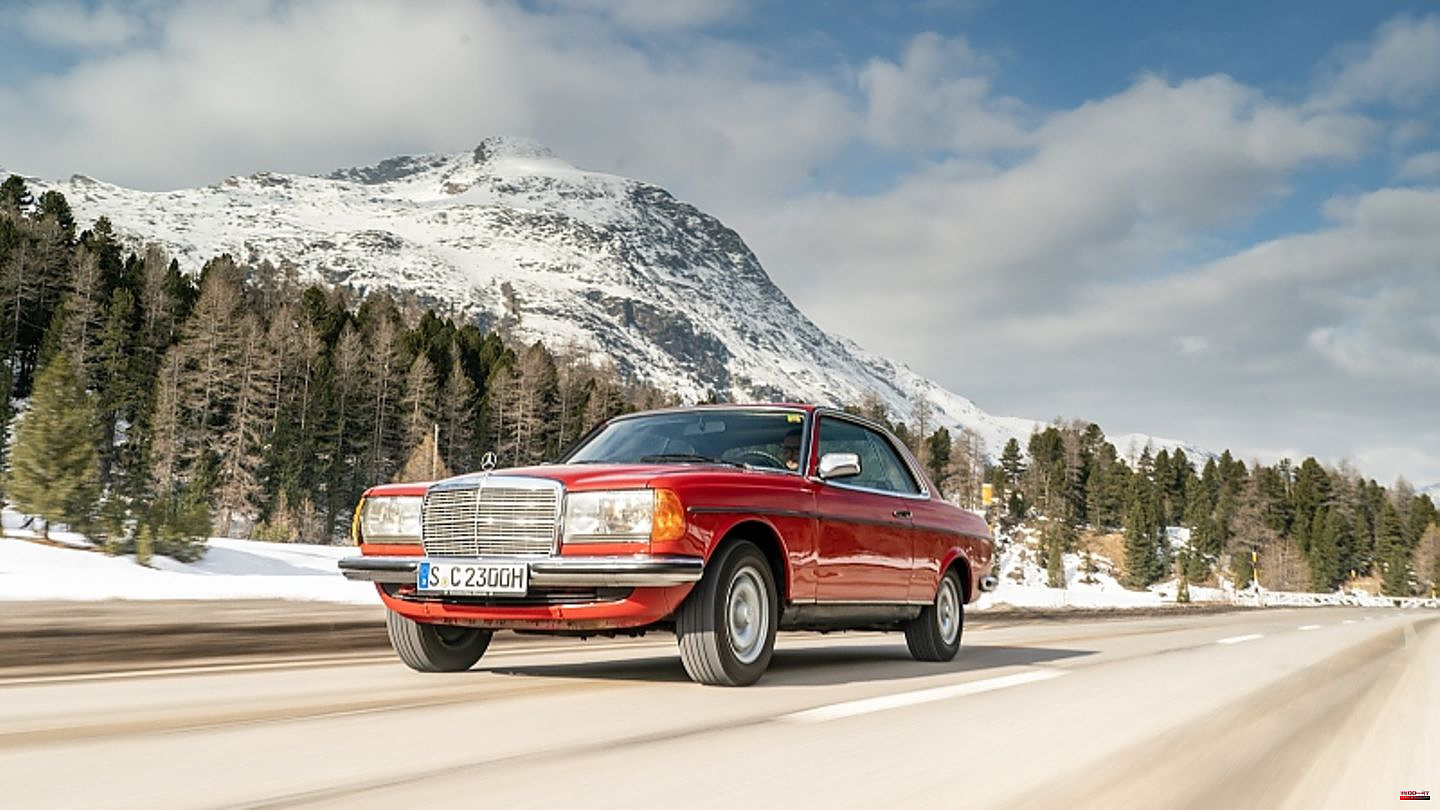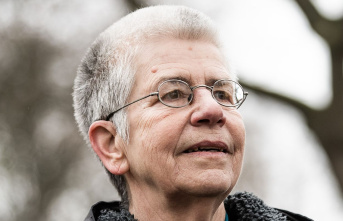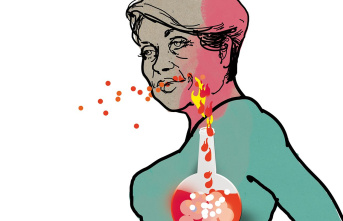Anyone who thinks of a classic model that is as comfortable as it is chic with a high level of everyday use and a corresponding stamp of quality will quickly think of the W123 series - when this was still decades away from the later designation E-Class. The elegant coupé brother of the four-door (W123) and station wagon (S123) celebrated its premiere at the Geneva Motor Show. To this day, no other coupé from Mercedes so perfectly embodies the mixture of simple elegance and everyday monotony. Not only the only optionally available headrests in the rear showed that it was also possible to travel in the rear in a befitting manner, while the luggage found enough space in the trunk.
The Mercedes W 123 series is still a driving legend today. In Africa, southern France and even in Germany, the 200 D, 240 D and 300 D pre-chamber diesel engines, which are considered indestructible, still rattle and rattle. In the USA and here especially in California, the W123 series and especially its S123 station wagon variant have long since become the cool trend model of the tech disciples . Anyone who finds a Tesla too normal, a 5-series BMW too faceless or a Toyota Prius too embarrassing gets applause as a grown-up hipster in his father's former dream car between San Diego and San Francisco. Well equipped, motorized just as lively and economical as with the long-distance runner of the 300 TDT, classic car fans break down the door at the Mercedes Classic Center in Long Beach or specialists such as Mercedes Motoring to get the corresponding 123 versions of the appropriate quality in their own driveway.
The US trend has long spilled over to Germany and in addition to the family-style sedan / station wagon versions with significantly worse equipment and less dynamic motorization, more and more classic car lovers are looking over to the two-door Mercedes C123 and realizing that this was born at the Geneva Motor Show in 1977 parked in the classic car resort for many years. Yesterday, like today, the coupe version of the 123 series is nothing for the grand entrance. After the elegant two-door car, you don't turn around pensively or flatten your nose against the mostly lightly tinted side windows. It's like when the C123 premiered in a pretty but unspectacular lakeside villa on the shores of Lac Leman.
In the late winter of 1977, the last snow still lay on the mountains around Lake Geneva, but the sun on the shore rivaled that of the Daimler manager. The three start versions 230 C, 280 C and 280 CE were presented to the public for the first time on a terrace in a wide variety of colors and a wide variety of interior fittings (leather, velor and fabric) before the cloth was pulled at the trade fair. It wasn't a big gig; at Mercedes, this has always been reserved for the large coupés such as the SLC or SEC. The C123 was a mixture of head and heart with very clear borrowings from the spectacularly successful sedan and the practicably decorative station wagon as the first lifestyle station wagon. The close derivation of the successful sedan from the Mercedes W123 series can be seen at first glance in the C123. Apart from details such as rectangular headlights and a chrome strip under the lamellar lights, the front and rear are identical (otherwise only the 280s had this); the wheelbase is 8.5 centimeters shorter, the roof line four centimeters flatter and the windows more inclined.
Neither then nor now was the C123 a spectacular eye-catcher. It is elegant, already had emphatically classic lines in 1977 and its grand entrance with the windows down. Only optionally electrically operated, the four side windows slide into the slots provided for this purpose in the doors and side parts. At that time, one looked in vain for contemporary features such as a comfort switch or even a central switch in the wooden (first root wood, then zebrano) center console. The appearance with the side windows down was, and still is, a big one; the freedom behind the wheel, also due to the low side line, comes close to driving in a convertible, at least with the sunroof open. The 123 coupé not only inherited the design, equipment and engines from the sedan, but also the generous amount of space and excellent travel comfort. The safety equipment set standards with the world premiere at the Geneva Motor Show in spring 1977.
When it came to engines, the same applied that mostly applies to coupés and convertibles today. Weak basic engines had no place in the model range and the symbiosis of chic coupé body and diesel engine was only available in the USA with the Mercedes 300 CD / 300 CD Turbodiesel. The basic equipment was comparatively sparse in all models; but if you wanted, you could upgrade your four-seater star coupé with countless extras befitting its status. An electric sunroof, a right-hand exterior mirror, electric windows or a radio with an electric antenna were particularly popular at the time, along with aluminum rims. In addition, there were new metallic colors, on request also those headrests in the rear or an air conditioning system for pleasantly cool air on hot summer days, while the seat heating provided warmth from below in winter.
The engine range came from the upper range of the W123 sedan or the equivalent station wagon of the S123. The 109 hp entry-level Mercedes 230 C could only satisfy the lowest demands in terms of driving dynamics. Weighing over 1.4 tons, the four-speed automatic took away any momentum. A maximum torque of almost 190 Nm and a top speed of 165 km/h may not in themselves fit the elegant, sovereign claim of a Mercedes coupé. Engine sound and zest for action made it more of a wandering dune than the way coupés presented themselves: strong, noble and exclusive. The 156 hp 280 C offered that, at least to some extent, and in terms of image the 177 hp Mercedes 280 CE offered significantly more. For the American market, the just 80 hp version of the Mercedes 300 CD was added faster than many expected, which was particularly popular in California. It was only in 1981 that the economical but anything but smooth-running diesel engine, which was similarly installed in models of the 116, 123 and 126 series, was replaced by the 300 CD turbo diesel, which at least achieved a significantly more powerful 125 hp. Of the almost 100,000 C123 coupés produced between 1977 and 1985, more than 15,000 models were sold with a diesel engine. As early as 1980, the carburettor version of the 230 C was replaced by the much livelier 230 CE, which delivered 132 hp thanks to mechanical fuel injection.
Today, the Mercedes C123 is a coveted classic car - in the USA and in Europe. A well-equipped 280 CE with less than 150,000 kilometers is definitely available. But with the appropriate maintenance condition, it is difficult to do anything under 22,000 euros. The poorly equipped 230 CE are simpler and can be had in good condition for 15,000 euros or less, if you are not afraid of many previous owners and higher mileage without a complete service history. But that could become an everyday classic for eternity, because most of the parts are still readily available and not too expensive. The quality of the coupé, apart from rust and wearing parts, is still impressive today - summer and winter.












